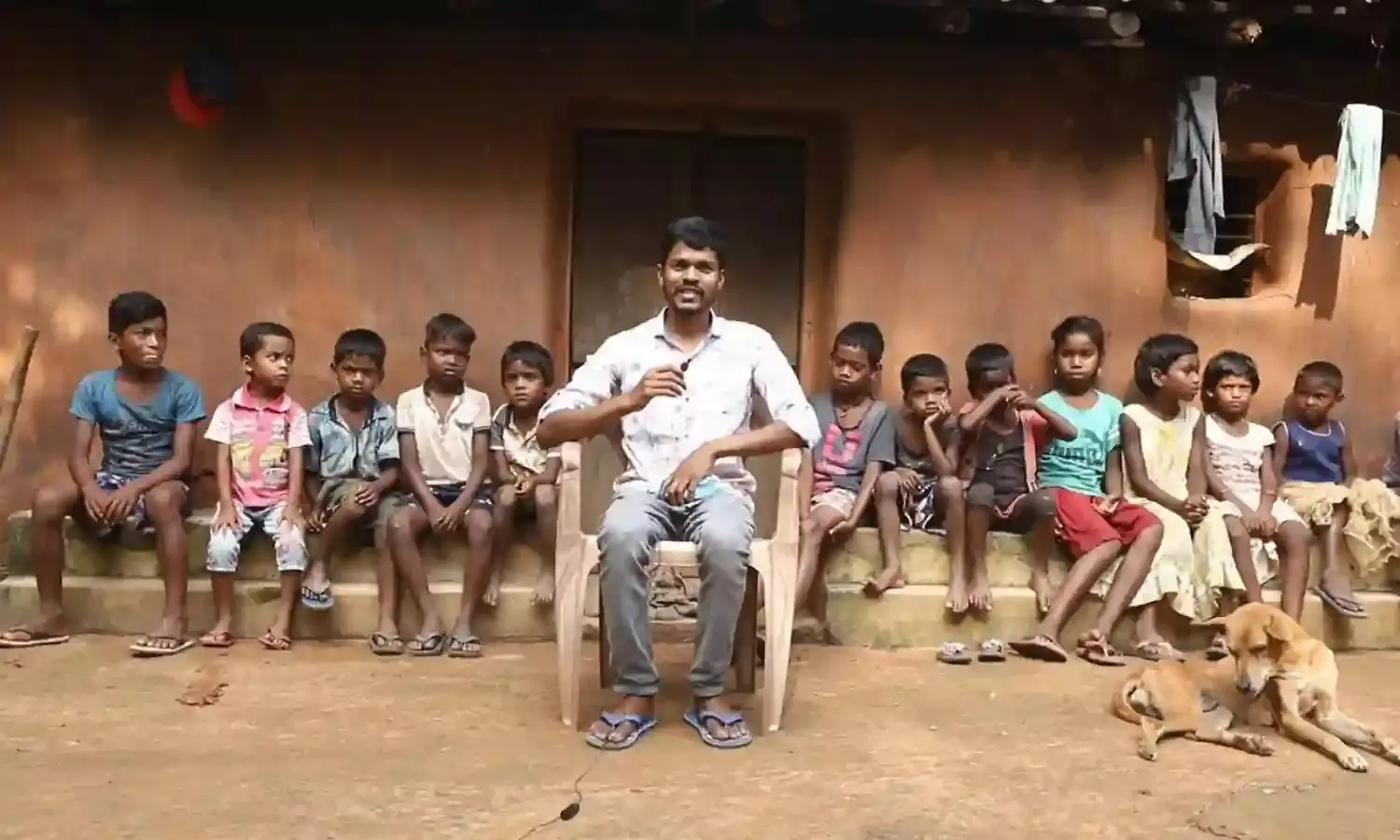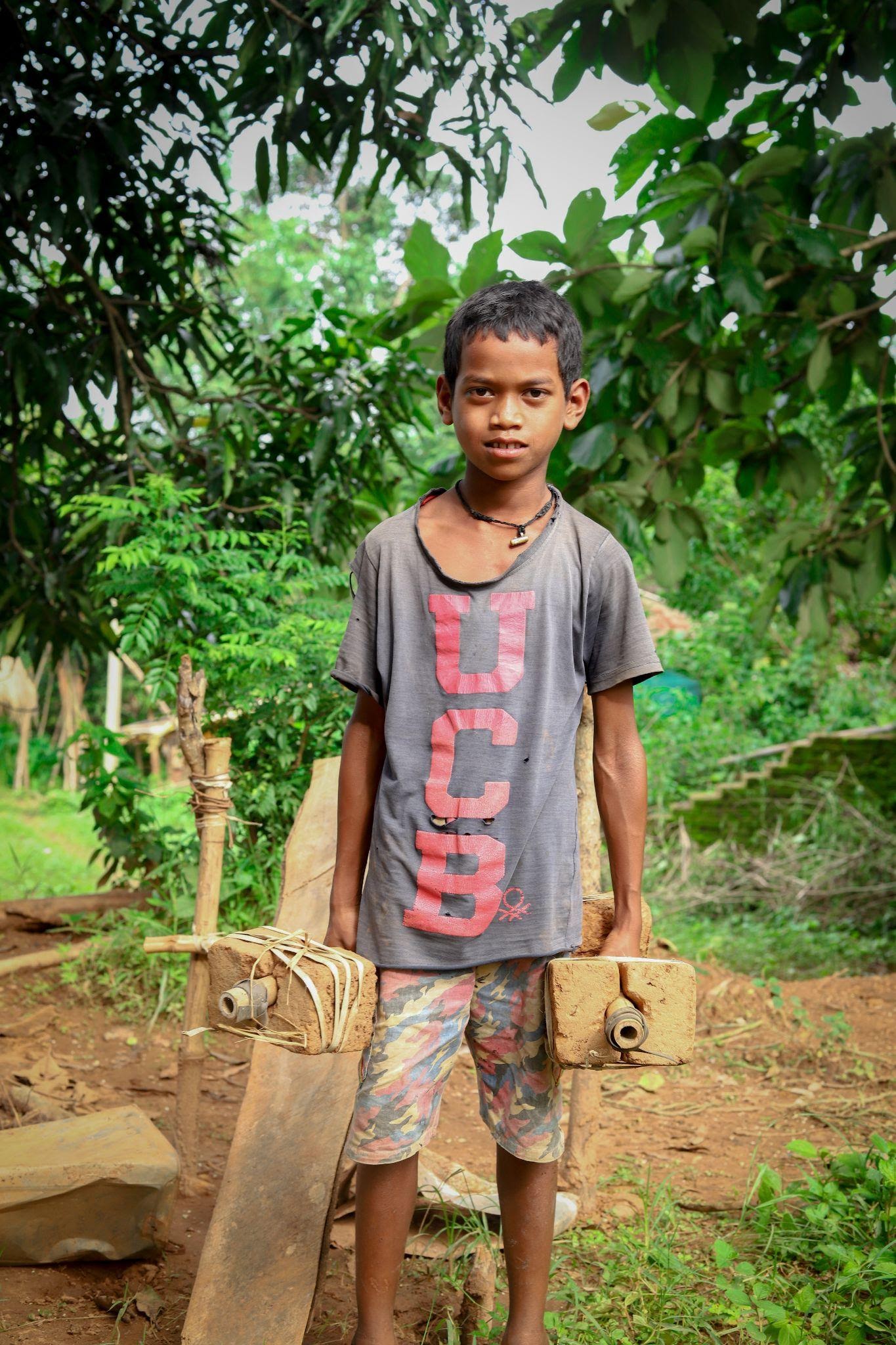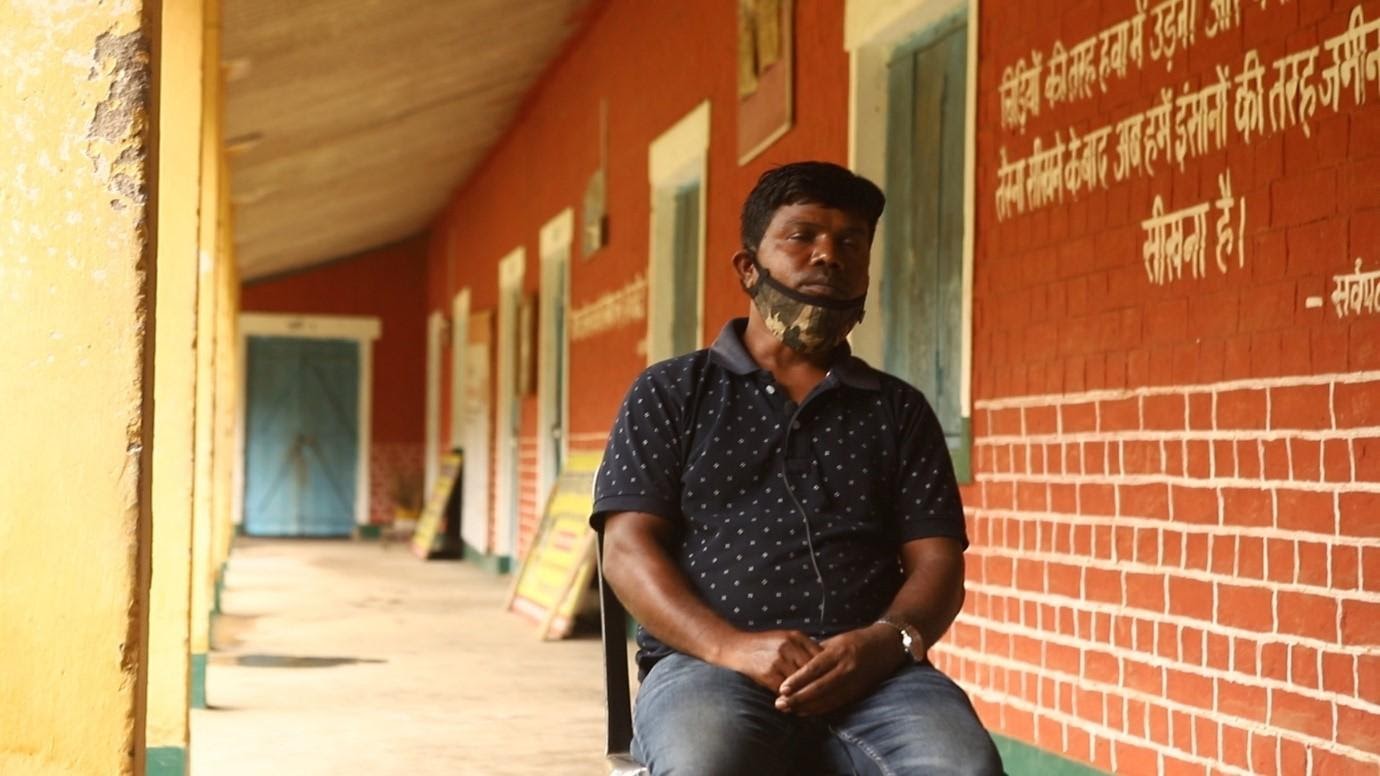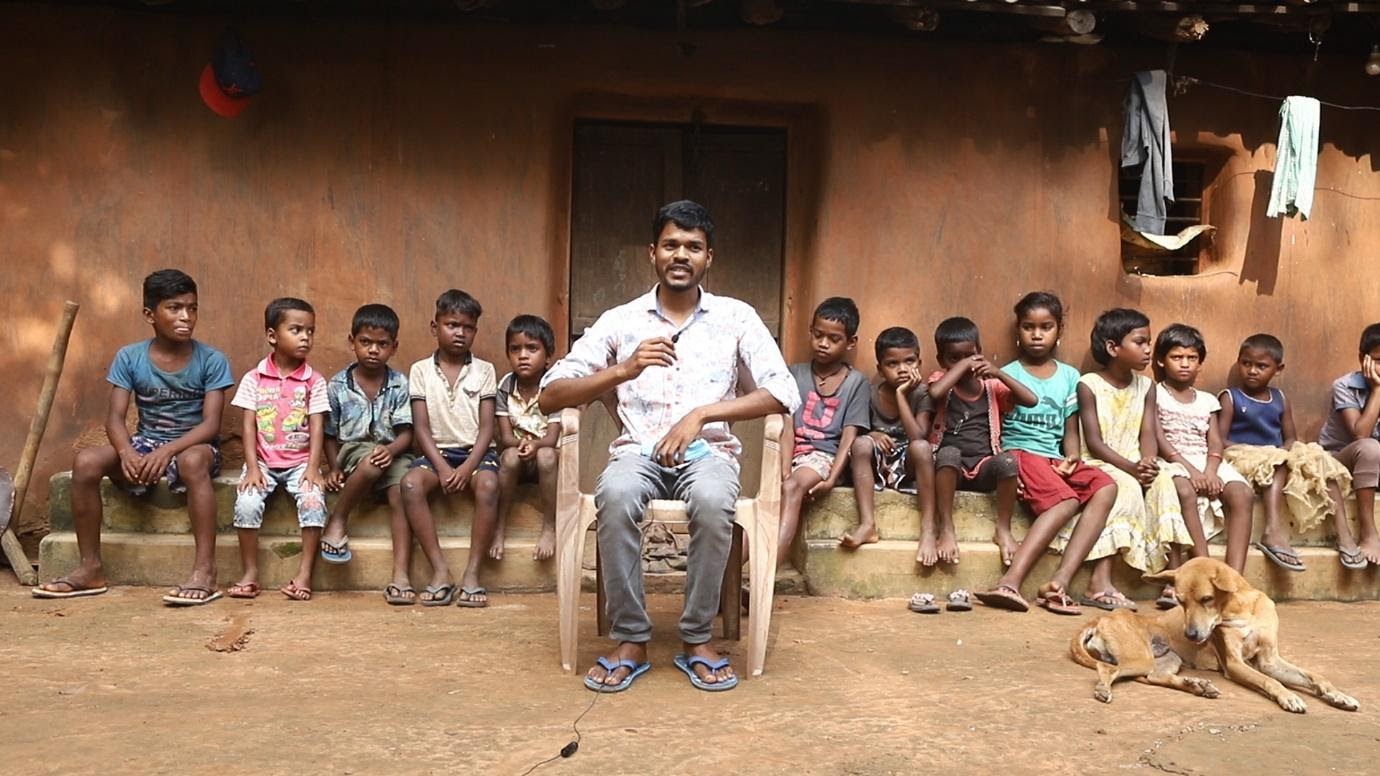A Photographer, a Doctor and a Hockey Player at Risk of Being Forced Out of Jharkhand Schools
No internet and unaffordable fees

Ibha Bodra of the Jate High School tells us, “I want to become a doctor when I grow up. Biology really intrigues me as a subject but I have lost touch because school is not functioning for the past year and a half.”
She adds, “My mother supports me but others in the family do not.”
Ibha is not alone in facing problems from her extended family - girls literacy is still below 50% in these rural areas of Jharkhand.
Here in Jate, the children’s only source of education is Aseem Poorti, a third year college student who studies in Ranchi but has been stuck in his village since Covid.
“Initially when I was stuck, I used to see the kids just roaming around the village. So I raised the issue in the Gram Sabha and decided to teach them so they do not completely lose touch.
“Only one or two households in our village have smartphones, and even if they do the network is so poor that it is nearly impossible for the children to attend online classes.
“Most of the young children had to drop out of school because of the unaffordability of the fee, hence my aim was to at least teach them to read and write.”
Poorti is also dealing with his own education. Though he has a smartphone, he along with other graduation students in the village have been unable to attend their classes.
“Even to download the syllabus we have to travel about three-and-a-half kilometers to get a good network connection.”
Jate residents appreciate the efforts being put in by Aseem, and say their children’s education is of utmost importance as it looks like the only hope for the village’s upliftment.
Birsa Poorti of the same village suggests that students should resume studying from the same grade where their education was stopped.
In other villages that are in a better state, students at least receive books from their teachers and are left to study by themselves. But Jharkhand’s Adivasi villages still struggle to afford smartphones and access mobile networks.
Only 22 out of 100 people have internet access in the state’s rural areas, compared with 50 on average in India. The only source of education for many kids is the elder students of the villages, who are trying to combat the digital divide.
Elsewhere in the state, school teachers too are facing grave difficulty.
The schools accessible to the villages of Khunti are publicly funded, and teaching had almost stopped due to extremely low internet penetration. In Bichna, principal of the Lutheran Middle School Amar Barla says that only 1 in 20 students can access online class.
“Here, the only way of teaching in the past two years has been to forward the study material we receive to the students over WhatsApp. Zoom calls and Google meets are not possible here, since most of the internet providers either do not have their networks or come with very low bandwidth.”
Children in these villages are struggling to find a medium of education. The Jate High School found in a survey that only 10 of its 81 students in ninth and tenth grade had a smartphone in their homes.
In Siyankel, class 10 student Lara Kandir tells us how despite having a smartphone he has had to compromise a lot on his education.
“I want to become a photographer when I grow up. But the conditions we have to face even with our basic education paint a different picture.
“During the lockdown, five or six of us would go on the hills hunting for network, and still not receive it properly.”
In Rodo the condition of the education infrastructure is even worse. Most students here only speak Mundari, an Adivasi language, and internet penetration is even lower than elsewhere in Khunti.
Rustom, 12 years old, wants to be a hockey player. He used to travel three kilometres outside Rodo just to get network on his friend’s phone, so he could watch videos on how to make your own workout equipment.
He has built his own workout station, complete with a bench press, weights and everything else using farming equipment from his place.
His mom worries that he won’t be able to play hockey if the education problem continues, among the other financial problems in their home.
Most parents here rely on farming for their livelihood, and do not earn enough to buy their kids a smartphone.
In Jharkhand over a quarter of people are from a Schedule Tribe. Besides low internet access and low literacy in the state, the nationwide dropout rate of ST and SC college students has been steadily increasing.
Between 2016 and 2020, less than a quarter of students at India’s 72 centrally funded universities were from an SC or ST community, and over 35% of them were forced to drop out.

In urban areas, teachers say they miss the blackboard and the staff room conversations, and are still adjusting to classrooms onscreen.
Mr P. Shaw of Jamshedpur, who has been teaching for about 28 years at the Little Flower School and 38 years overall, shares how difficult things were for him earlier and how he managed to get over the blackboard and chalk study pattern.
“The lockdown definitely took a toll over my physical and mental health. I used to feel more fit when I used to walk to school every day and climb the stairs to go teach in different classrooms.
“Now that the students are kilometers away from me, it gets difficult to understand their problems and whether their doubts are being cleared or not. A lot of students do not even respond to the messages in the groups or even as I call their names out in the Zoom meeting.
“Earlier I did face a lot of problems since I was accustomed to teaching on the blackboard, but my new laptop on which I could use the stylus has made things much easier.”
While correcting test papers, he shows us how students would mischievously upload blurred pictures of their answer sheets, making it difficult for the teachers to understand even a single letter.
One sigh of relief amidst all the anxiety is that the teachers are being paid their salaries on time and have had constant support from their school.
The picture is totally different in Indigenous areas. Teachers here remained physically active, because they were on Covid duty the entire time and had to visit one village after another spreading awareness. But their mental stress has reached its peak.
Teachers in Khunti tell us they did not even receive basic safety equipment like a PPE kit to keep themselves safe from the pandemic. At the Lutheran Middle School, there are teachers whose salaries have not been cleared for the past six years.
One such teacher is Godwin Topno.
“I teach almost all the subjects to the students. Apart from that I am also their sports teacher. On one hand I pity the fact that the students of this school are being denied their right to education. On the other, there is severe pressure on me as well, as my salary has not been credited for as long as I have been teaching over here, six years.”
Another teacher, Lily from the Bandgaon area, explains how difficult it has been to stay in touch with students. Though she has a smartphone, and tries to keep in touch as much as she can, there is a major problem with the electric supply in neighbouring villages, where there is no electricity sometimes for 3 or 4 days.

Though the problems of teachers in rural and urban areas are different, they share one common anguish. The media has given negligible attention to the problems of teachers in both rural and urban areas.
They say their lives have been really difficult since the pandemic, especially since they have not been receiving much cooperation from anybody, but the least one could do is recognize their efforts. They hold the fourth pillar responsible for their voices not reaching the right place.
While the Jharkhand government recently allowed schools to reopen, proper measures need to be taken before school life can resume, especially in the rural areas.
The dropout rate of children in these Jharkhand villages has gone up sharply, and children have started to join their parent’s occupation.
Formal surveys need to be conducted, awareness campaigns organized, the socioeconomic issues need to be addressed to convince parents to send their children back to school.
Suggestions also need to be taken on how to recover the loss that has been incurred for no fault of the children.
Hrishi Raj Anand is a freelance journalist working on rural and tribal issues
Photographs by Udit Barla
 Aseem Poorti with his students in Rodo village
Aseem Poorti with his students in Rodo village



